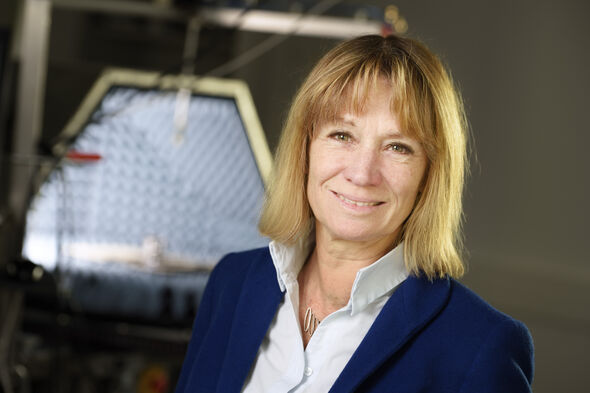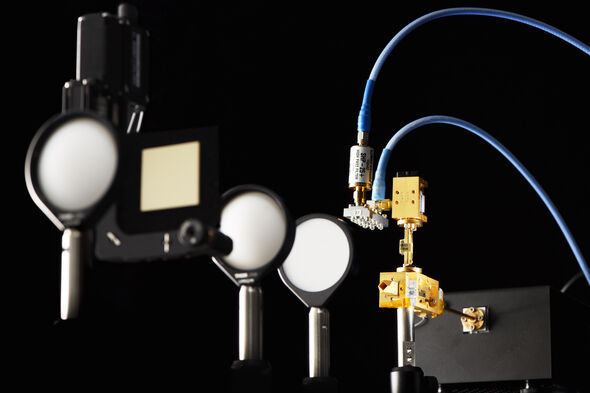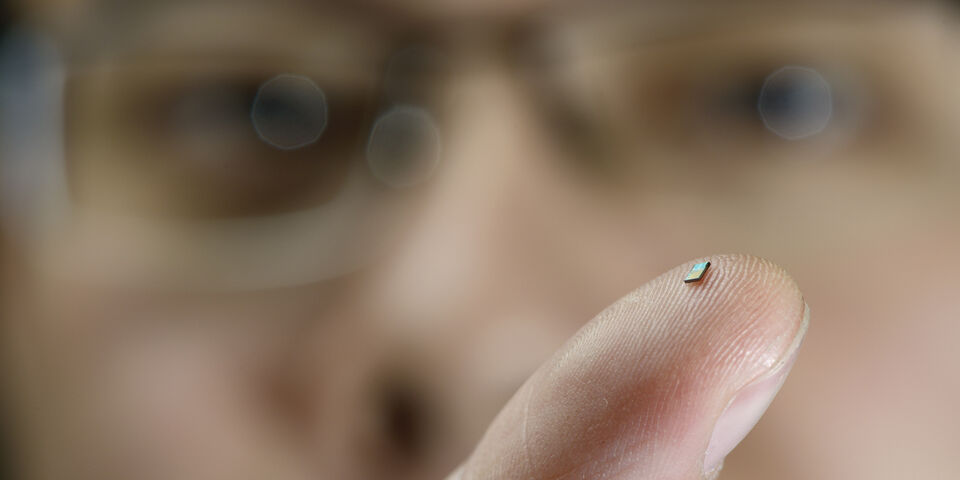The wireless future
Holographic watches, virtual teleportation, wireless microsensors, the Internet of Things, radiation that enables you to read a closed book: all of this sounds like science fiction. Nevertheless these visions of the future are more science than fiction, if it is up to the researchers of the Center for Wireless Technology Eindhoven (CWTe). Recently the CWTe presented a new roadmap for the coming decade, and a new director: Sonia Heemstra de Groot.
Since 2007 the five subdepartments of the TU/e Department of Electrical Engineering that focus on wireless technology have been united in the CWTe. They are thinking about the next generation of wireless technology – such as 5G – and beyond that, says Professor Sonia Heemstra de Groot, who in September took over as director from CWTe founder Peter Baltus. The Argentinian-born Professor is a specialist in the field of wireless networks, and has since last year been coordinating one of the three scientific programs of the CWTe: Ultra-High Data Rates (UHDR). Former director Peter Baltus is in charge of the Ultra-Low Power program, while the young research area of the terahertz systems is led by Associate Professor Marion Matters.
“For the sixth generation of wireless technology you should think of terabits per second”
High data rates are essential for all visions of the future, Heemstra de Groot explains. “At present we have download speeds of some three hundred megabits per second, and for 5G that has to increase to ten gigabits per second, and for the sixth generation you should even think of terabits per second.“ Moreover, it is crucial for many applications that the least possible delay occurs in the transmission of all that digital data, and the reliability of the data transfer is essential as well, as the CWTe director explains. “Think of remote surgery, in which a doctor directs a surgical robot via the Internet. You don’t want any data packages to disappear while the surgery is in progress.”
Within the CWTe various new techniques are being researched to increase the wireless data capacity. This can be done, for example, by using higher frequencies than the band between 1 and 6 gigahertz that is currently reserved for wireless communication. With rows of antennas each merely several millimeters long it is possible to make very narrow, meticulously focused radiation beams, with which information can be transmitted far more efficiently than is possible with today’s Wi-Fi, for instance.
In another research line within the CWTe the aim is to make ever smaller, reciprocally communicating chips and sensors: the basic components of the Internet of Things. A fine example is the minuscule temperature sensor which the then TU/e PhD candidate (and current Assistant Professor) Hao Gao developed last year. This sensor, with a size of only two square millimeters, derives its energy from the radiation of the wireless network of which it forms part – so it needs no batteries.

Terahertz systems
The youngest program within the CWTe is all to do with terahertz radiation. This section of the electromagnetic spectrum comes with countless exciting applications, as in medical imaging technologies or in scanners that can see through clothes and plastic. In America researchers have already succeeded even in reading pages from a closed book by means of terahertz radiation.
In the CWTe lab in Flux experiments are already being conducted with frequencies up to about 0.5 terahertz. Marion Matters shows us the setup with mirrors and lenses, components that are also used for steering laser light in the right direction – but these lenses are made of opaque Teflon. “The similarity with optics is strong indeed”, she says. “That’s what I like so much about this field of study; that it merges electronics and optics. I myself graduated in laser physics, so I am quite familiar with lenses and mirrors.”



Discussion